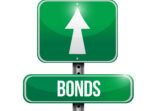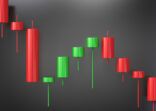“Within the Asian equity space, we concentrate on China, India and Indonesia as they are less inclined to export compared to the rest of Asia as well as other OECD countries,” she said at a briefing on Wednesday in Hong Kong.
“If there is indeed an increase in trade barriers, these nations are more defensive. For instance, in terms of the source of revenue for Chinese companies under the Hang Seng China Enterprises Index, or the MSCI China Index, exports account for less than 30% of the total earnings,” she continued.
Equities of these three markets are also expected to have 10% earnings per share growth this year, the highest in Asia, primarily driven by domestic consumption and structural reforms.
China’s retail boom
“HSBC economists forecast China to overtake the US to become the world’s largest retail market in 2017, with total retail sales of $5.3trn versus $4.94trn projected for the US, while China will remain the world’s number one [online] retail market,” the bank said in its latest quarterly outlook report.
However, China’s depreciating currency and the efficacy of the government’s striciter rules to stem capital outflows are concerns.
HSBC forex strategists forecast the RMB to weaken to 7.2 against the dollar by year-end, a further 4% depreciation versus the current level of about 6.9. An accelerated pace of rate hikes in the US will put additional pressure on the RMB.
The bank, however, predicts the US will not raise interest rates as vigorous as other analysts believe. “The strong dollar coupled with high interest rates are bad for economic growth. It will also push up the costs of debt servicing to the already burdened US government [dealing with] high debt levels,” she noted.
US debt is also the reason why the firm is positive on gold.
“The recent correction in the gold price should provide a good strategic entry point when investor fears of rapid US rate hikes ease in the coming months.”
The bank expects gold price to reach $1,550 per ounce at the end of 2017, as compared to $1,178 today.
















